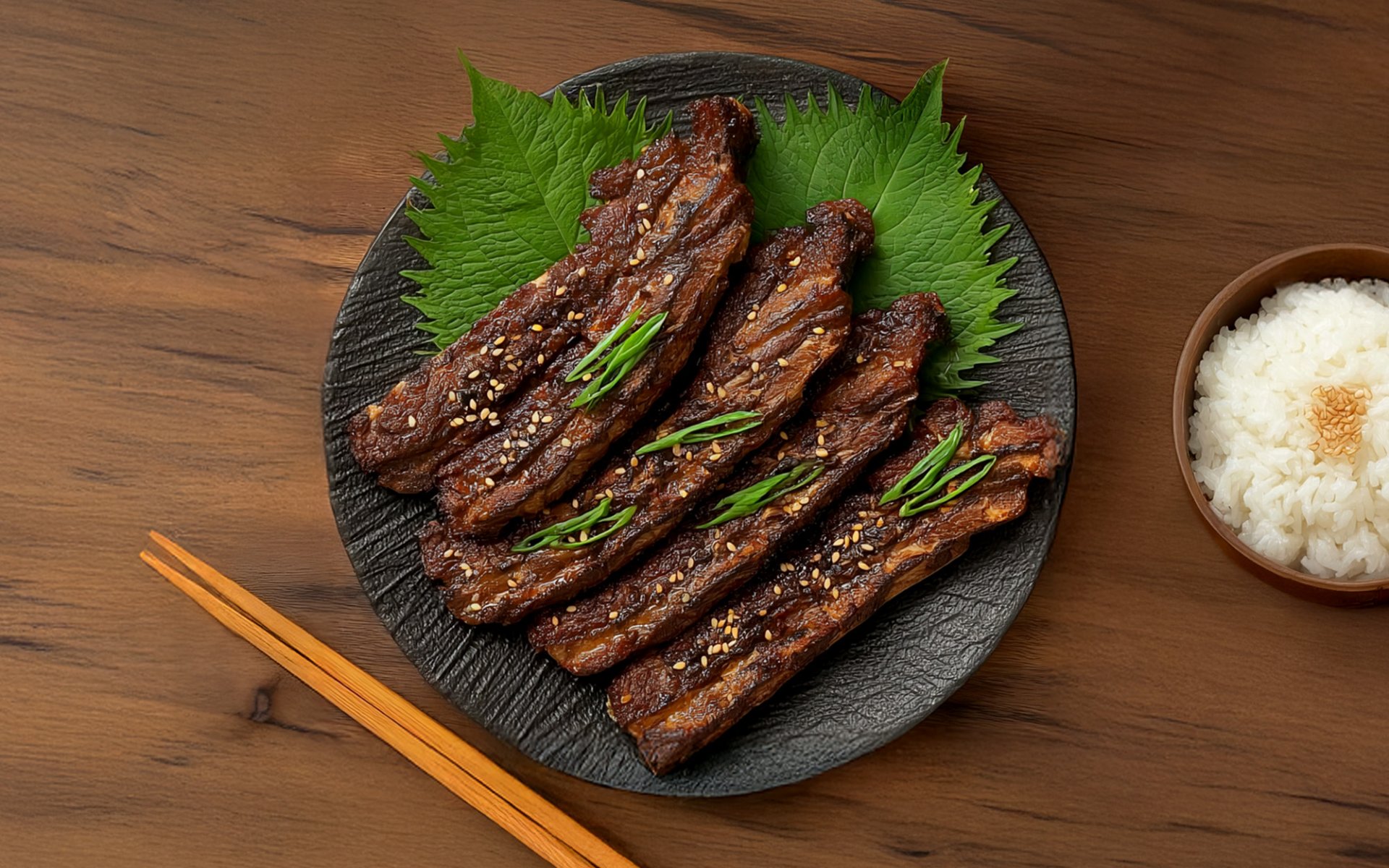Galbi (갈비)

Galbi (갈비), often translated as short ribs, is a popular Korean grilled dish that primarily uses beef ribs as its main ingredient. In Korean, the word Galbi literally means ribs. Traditionally, it refers to beef short ribs marinated in a savory-sweet sauce made from soy sauce, garlic, sugar, and other ingredients that enhance its distinctive aroma and flavor.
Galbi in the Joseon Dynasty
The history of Galbi can be traced back to the Joseon Dynasty (13921897). During this era, cattle were not only a food source but also essential for agriculture, plowing fields, and transporting goods. As a result, the government imposed strict laws prohibiting commoners from slaughtering cattle for food. Violators faced harsh punishments.
Because of this restriction, beef consumption was a privilege reserved for royalty and high-ranking officials. Within the royal palace, one notable dish was Galbijjim (갈비찜), a braised beef short rib stew. This elaborate dish required hours of preparation, using only the finest beef, marinated in a carefully blended sauce and simmered until the meat became tender, carrying a harmonious sweet and savory flavor.
Galbi for the Common People
By the late 19th century, as Korea opened to the outside world and established relations with Western nations, its society began to change. Restrictions on beef consumption were gradually relaxed, and ordinary people gained some access to beef. Nevertheless, beef remained expensive and relatively scarce.
After the Korean War, South Korea entered a period of rapid recovery and modernization. As incomes rose and the livestock industry expanded, beef became more accessible and affordable. Around this time, the tradition of table grilling emergedKoreans installed small grills on dining tables, cooking and enjoying Galbi together in a communal setting.
The Secret of Galbis Flavor
What makes Galbi exceptional is its unique marinade. Common ingredients include Korean soy sauce, brown sugar, minced garlic, chopped green onions, sesame oil, and Korean pear juice. Each family often has its own secret recipe passed down through generations. Beef ribs are soaked in this marinade for 46 hours, or even overnight, to allow the flavors to fully penetrate the meat. The ribs are then grilled over moderate heat until evenly cooked and beautifully caramelized.
Suwon The Home of Galbi
The city of Suwon, in Gyeonggi Province, is especially famous for its Galbi. Home to the largest cattle market in Korea, Suwon has been serving Galbi in its restaurants since the 1940s, maintaining its reputation as a culinary destination for this iconic dish.
The Birth of LA Galbi
A major turning point in Galbis history occurred in the 1980s in Los Angeles, USA. Many Koreans had emigrated there, longing to recreate the Galbi of their homeland. However, they encountered a challenge: American butchers did not cut beef ribs the traditional Korean way. Instead of thick, long bone-in cuts, ribs in the U.S. were sliced thinly across the bone.
Rather than being discouraged, Koreans in Los Angeles adapted by using these cross-cut ribs to make Galbi. The result was surprisingly successful. The thin slices cooked quickly and evenly, were easier to eat without removing meat from the bone, and were more affordable since they came from less popular rib cuts. Despite being inexpensive, the taste was just as delicious as the traditional version.
This style became known as LA Galbi. Some say the name comes from Los Angeles, where it originated, while others believe LA refers to lateral, describing the cross-cut method.
LA Galbi became popular not only among Korean immigrants but also with Americans. Its quick grilling, ease of eating, and rich flavor helped Korean restaurants in the U.S. flourish. This success marked the beginning of Korean cuisines wider popularity in America.
Galbi and the Korean Wave
By the late 20th and early 21st centuries, South Korea began sharing its culture with the world through the Korean Wave (Hallyu), driven by K-pop, Korean dramas, and award-winning films. Korean food, including Galbi, greatly benefited from this trend. International fans, eager to experience the dishes seen in dramas and movies, sought out Galbi as a way to connect with Korean culture.
Modern Variations of Galbi
Today, Galbi exists in many forms:
- Classic grilled Galbi beef ribs grilled over charcoal.
- Galbijjim braised short ribs simmered with vegetables such as carrots, radish, and mushrooms, perfect for cold weather.
- LA Galbi cross-cut short ribs that cook quickly and are easy to eat.
- Tteokgalbi ground beef short ribs mixed with seasonings, shaped into patties, and grilled.


